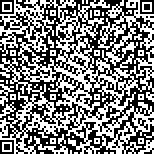| 摘要: |
| 目的 区域尺度的灌溉耕地空间分布信息是相关研究和管理的重要基础数据。中国的灌溉农业面积居全球第二位,但目前灌溉空间分布制图相对缺乏,且多依赖人工调查,利用遥感技术进行区域灌溉耕地制图成为未来发展趋势。针对目前对我国灌溉耕地特征参量研究不足、难以描述灌溉耕地优势特征的空间差异性的缺陷,更好指导未来灌溉耕地制图。方法 文章以高精度遥感产品作为真值,在对已有研究选用的分类参量进行统计分析的基础上,选取年降水、高程、坡度、地表水分指数和归一化植被指数作为不同类型特征参量的代表,通过单变量特征选择算法Select K Best,对我国北方不同地区的灌溉/雨养耕地的优势参量进行了系统分析,并针对主要问题提出了解决思路。结果 研究结果显示,不同地区的优势特征类别呈现较大的地域差异,一些新特征被发现较常用的参量更有效;不同地区所呈现的特征优势原因各异。耕地基础禀赋、地理条件和灌溉结果三者互相关联,共同影响灌溉耕地空间信息提取的精度。结论 耕地基础禀赋和灌溉结果最终归因于地理条件,地理条件是未来灌溉耕地制图中需要优先重点考虑的特征参量。 |
| 关键词: 遥感制图 灌溉 耕地 特征选择 中国北方 |
| DOI:10.7621/cjarrp.1005-9121.20210904 |
| 分类号:TP753 |
| 基金项目:国家自然科学基金“中国耕地复种潜力与空间优化配置”(41871356);上海市科学技术委员会“典型农业圩区关键水文过程及面源污染排放规律研究”(21DZ1202405);上海市地矿工程勘察院科研项目“环境安全视角下工业地块规划转型利用方向研究——以静安区为例”(GKY2021108) |
|
| ANALYSIS OF FEATURE SELECTION FOR MAPPING IRIGATED CROPLAND IN NORTHERN CHINA |
|
Liu Yizhu1,5, Li Qing2, Wu Wenbin3,4
|
|
1.Shanghai Yaxin Construction Engineering Co., Ltd., Shanghai 200436, China;2.College of Urban & Environmental Sciences, Central China Normal University, Wuhan 430079, Hubei, China;3.Institute of Agricultural Resources and Regional Planning, Chinese Academy of Agricultural Science, Beijing 100081, China;4.Key Laboratory of Agricultural Remote Sensing, Ministry of Agriculture and Rural Affairs, Beijing 100081, China;5.Technology Innovation Center for Land Spatial Eco-restoration in Metropolitan Area, Ministry of Natural Resources, Shanghai 200436, China
|
| Abstract: |
| Spatial information of irrigated cropland with high accuracy is fundamental for water and agricultural researches and management. China owns one of the greatest irrigation engineering on the globe, but as a result of the diversity of agriculture in this giant country, there is little special understanding on features for distinguishing irrigated and rainfed areas, so as to few automatic production of irrigation maps. So, in this study, we intend to comprehend various kinds of characters of irrigated fields on provincial scale in northern China in a statistically way. On the behalf of geographical, water content and vegetation growth features, elevation, gradient, annual precipitation, time series LSWI and NDVI were selected for analysis in a feature selection algorithm named Select K Best. The results of the algorithm displayed a great difference of regnant characters in various provinces. Some features were found effective in distinguishing irrigated and rainfed croplands first time. The performances of characters were qualitatively analyzed with the supports of mapping and statistical data in study areas. In northeastern provinces, flat terrain and climate with low temperature made relative monotonous plantation and management, this resulted greater difference on water content between irrigated and rainfed. However, concurrent growing season of crops made vegetation index performed passably. So, we deem that distinguishing irrigated and rainfed in this regions could be simplified into identification of crops. Additionally, Inner Mongolia, the driest province in northeastern prompted the reduced influence of natural conditions caused by the expansion of artificial engineering. Adversely, the consistency of geographic and agricultural areas made most provinces in the Northern under the help of absolute quantitative superiority of main crops except Shanxi. Since Shanxi possessed none profitable conditions above, multi-temporal images with higher resolution maybe libertate the province with optimal and comprehensive feature sets.The northwestern integrated all superiorities of the other regions, so nearly all kinds of features behaved well in the scoring analysis. Generally, geographical features, basic conditions of croplands and the results of irrigation codetermined the performance of feature selection as well as the accuracy of maps. Though the three factors interacted with each other, while the former one was the decisive one which the latters both depended on. So, we deem that geographical features should come first in mapping irrigated croplands. Otherwise, the datasets were considered having definite influenced the scores, except the spatial resolution of remote-sensed images and the productive process of annual precipitation. |
| Key words: mapping irrigation cropland feature selection northern China |

